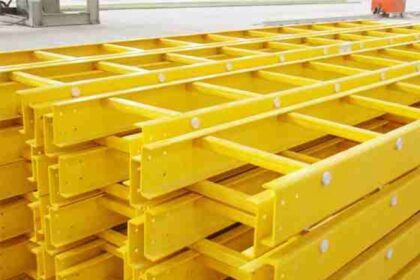Agriculture is undergoing a fundamental transformation, one not driven by habit or instinct, but by data. Agriculturists today have access to technology their predecessors could barely imagine: satellite imagery that follows the condition of crops from out of space, GPS technology that guides gear with centimeter accuracy, and Geographic Information Systems (GIS) that turn complex spatial information and simplify them into uncomplicated, actionable decisions. This technological revolution is addressing some of the largest challenges of agriculture, ranging from optimizing the use of resources and yields to encouraging environmental sustainability. Geospatial services are one of the cutting-edge technologies that allow farmers to transform data into smarter, more sustainable decisions. With the integration of remote sensing, GIS, and GPS technologies, agricultural operations today are becoming increasingly accurate, effective, and responsive to climate conditions and market demands.
Understanding Geospatial Technology in Agriculture
What Is Geospatial Technology?
Geospatial technology is the integration of satellite imagery, GPS, and GIS for capturing, analyzing, and displaying spatial data on the Earth’s surface. Basically, this technology answers a simple question: what is happening, and where? In agricultural terms, this means the knowledge of the precise location and character of each component of a farm operation, from soil composition and moisture levels to crop health and pest pressure. As agriculture becomes digital, geospatial technology has evolved from being a research specialist tool to a central asset for farm managers in pursuit of competitive advantage. With the ability to visualize patterns across space and time, farmers can move beyond broad assumptions and make decisions that take into consideration the specific conditions of each field.
How It Supports Sustainable Farming
Geospatial tools are essentially transforming the way farmers consider sustainability and efficiency. By providing precise information on field conditions, these technologies enable minimization of waste while maximizing productivity. Instead of applying fertilizers, pesticides, or water across wide fields in a uniform fashion, farmers can identify where the inputs are truly needed and adjust rates. See how geographic data becomes strategic intelligence in transforming geographic data into actionable insight. Environmental benefits extend beyond a farm, as aggregated geospatial data helps regional planners understand agricultural impact on watersheds and ecosystems.
Key Applications of Geospatial Technology in Agriculture
- Mapping and Analysis of Soil: – Soil is the foundation of agricultural productivity, yet it may vary drastically even within a single field. Geospatial technology has revolutionized soil mapping by combining ground-based sensors, aerial imagery, and machine learning algorithms to map soil properties in extreme detail. These advanced technologies can monitor and map soil pH, nutrient levels, organic matter, and moisture retention capacity across entire farms. Spectral analysis techniques examine how different types of soils reflect and absorb light at different wavelengths, which indicate chemical and physical properties that control the growth of crops. Apart from characterizing current conditions, geospatial soil mapping also helps in assessing land suitability for different crops, balancing plant requirement versus soil capability and identifying where different areas will be most productive. GIS-based soil mapping, an integral part of geospatial services, helps farmers enhance the productivity of soil without wastage on fertilizers. Long tern monitoring conducted periodically using repeated surveys detects land degradation issues like erosion or salinization, allowing farmers to take remedial measures even before major damages are caused.
- Precision Farming and Smart Equipment: – Precision farming is applying geospatial data in the real world with GPS-guided equipment and intelligent field management systems. Variable Rate Technology spearheads this revolution, enabling equipment to automatically adjust fertilizer, seed, and pesticide application rates as equipment moves across fields, responding in real-time to the specific requirements of each management zone. Modern GPS-guided tractors and sprayers drive over fields with measurements precision of under a meter, eliminating overlaps and gaps that waste inputs. IoT sensors on farms allow networks to automatically track weather, machine performance, and plant health. Geospatial technology tracks animal movement, grazing patterns, and even health issues by identifying animals whose behavior deviates from the norm in animal agriculture.
- Crop Yield and Crop Health Forecasting: – Remote sensing has given farmers an unprecedented window into crop health throughout the growing season. Satellites and drones with multispectral cameras capture images that show plant stress, nutrient deficiencies, and disease pressures long before issues become evident to those strolling through fields. Vegetation indices like the Normalized Difference Vegetation Index study how crops reflect different wavelengths of light to identify plant vigor and photosynthetic activity. Early detection systems can detect pest infestations, fungal infections, or water stress during their initial stages so that interventions can be targeted such that small issues do not grow into large losses. Predictive analytics combine historic yield information, current satellite data, weather patterns, and soil conditions to forecast harvests weeks or months in advance. Environmental protection and sustainability insights from Geographic Information Systems in environmental conservation and sustainability also indicate how they support climate-resilient agriculture. The ability to monitor crops continuously across large areas of land helps agricultural operations to become more responsive and adaptive.
- Irrigation and Water Resource Management: – Water is becoming agriculture’s greatest limiting factor, and effective irrigation is thus critical to productivity and sustainability. Geospatial technology optimizes the use of water by mapping water stress across fields, identifying which areas in the field are experiencing moisture deficits and which zones of soil have adequate moisture. Satellite-based thermal imagery detects variations in crop canopy temperature that indicate water stress, with complementary data from ground sensors that refines such measures. GIS-based hydrology models simulate the movement of water in farm landscapes, aiding irrigation system design to spread water evenly. Using the integration of real-time weather forecasts, evapotranspiration computations, and soil water status, geospatial irrigation management systems determine the optimal time to irrigate in relation to crop needs without excess application.
- Farm Operations and Agricultural Logistics: – Geospatial technology extends beyond crop production. It automates farm operations and supply chain management. Accurate field boundary mapping provides the foundation for farm planning, allowing managers to track where what crops are being sown, calculate exact field sizes, and document land usage for regulatory compliance. Fleet management software uses GPS tracking to track location, measure routes to reduce fuel consumption, and plan maintenance based on real-world usage patterns. Disaster management is also a key application, since geospatial technology quickly assesses damage in the case of floods, drought, or infestation. It is easy for farms to monitor assets, logistics, and environmental impacts with geospatial advanced services. Administrative efficiency gained through geospatial farm management systems frees up time and resources for strategic planning.
Future of Geospatial Technology in Agriculture
The next generation of agricultural geospatial technology is even more capable, with artificial intelligence, machine learning, and growing sensor networks coming together. Machine learning algorithms will increasingly analyze patterns in historical geospatial data to provide recommendations that improve quickly with more data. Low-cost satellite constellations globally will provide near-real-time imagery with resolution and revisit frequencies that allow for daily crop monitoring on any-sized farm. Autonomous drones will conduct routine field surveys, identify problems and even conduct targeted treatments without the need for human involvement. As such technology becomes mature and accessible, precision agricultural tools will be accessible to any operation size.
Conclusion — Mapping the Future of Sustainable Farming
Geospatial technology is literally redefining the possibilities of what can be accomplished in agriculture, transforming farming from a work of seasonal routines to a data-driven enterprise capable of responding dynamically to weather, market conditions, and sustainability goals. From accurate soil maps that optimize fertilizer application to satellite images predicting yields months ahead, every pixel of information accumulates into wiser decisions and better results. With global agriculture having to feed a growing population in a manner that reduces environmental footprint, geospatial solutions provide the visibility and precision necessary to meet both objectives at the same time. Ready to integrate data intelligence into your fields? Discover how geospatial services can assist in growing smarter, greener, more profitable agriculture.

